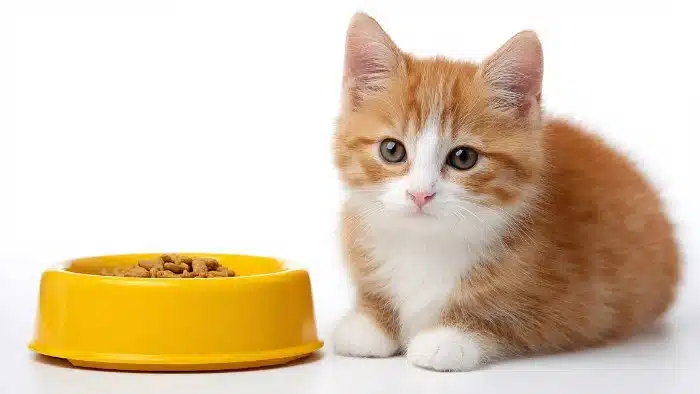Why Your Cat Guards His Food?

“When I get close to my cat’s bowl, it arches its back and hisses at me.” “When I feed two cats, one chases the other away and eats everything.”
Many cat owners have seen this kind of food guarding behavior. This doesn’t mean your cat has a bad temper; it’s simply following an instinct built for survival.
1. A Wild Instinct to Protect Resources
Cats inherited this habit from their wild ancestors. In the wild, food is limited and hard to find. Wild cats had to hunt, and other animals could steal their food at any time.
To survive, they developed an instinct — hissing, growling, or swatting to keep others away. Even after being domesticated, this instinct remains. If you put down a large portion of food, your cat may see it as a valuable resource and guard it.
Cats also have a strong territorial sense; they see the feeding area as part of their territory. When someone or another animal comes close, they may treat it as an invasion and defend themselves.
2. What Different Guarding Behaviors Mean
① Guarding against other cats:
Common in multi-cat homes. One cat eats fast and then takes the other’s food. It’s a sign of competition instinct, left from wildlife. Bigger or more dominant cats often use food to show their higher rank.
② Guarding against humans:
Some cats hiss, growl, or swipe when people approach their bowl. Usually it’s because they don’t trust humans or they fear their food will be taken away. If you once removed the bowl while your cat was eating, it may remember and feel unsafe. That’s why some cats grab food and hide to eat alone.
③ Guarding against objects:
Some cats even protect snack cans or treat bags. They treat these as “stored food” and don’t want them taken away.
3. Food Guarding Possible Health or Stress Issues
① Health problems:
If food guarding appears suddenly and your cat also eats less or loses weight, it could be mouth pain (gingivitis, ulcers) or stomach trouble.
Pain makes them eat fast and protect food because they fear losing it.
② Environmental stress:
Moving to a new home or having strangers around can make cats feel insecure. They see food as the only “safe thing” and guard it more. You may also see hiding, avoiding people, or peeing outside the box.
③ Bad feeding habits:
Feeding multiple cats from one bowl or touching them during meals
can teach them “food must be fought for.”
Over time, this makes guarding worse.
4. How to Build Trust
Never scold or take food from a guarding cat. Instead, use positive training to build trust. Feed each cat separately in different spaces and reward calm behavior near food. If a cat guards food from people, gradually reduce the distance while offering treats by hand. For stress or health-related issues, address the cause by providing a safe, quiet eating area or consulting a veterinarian.
